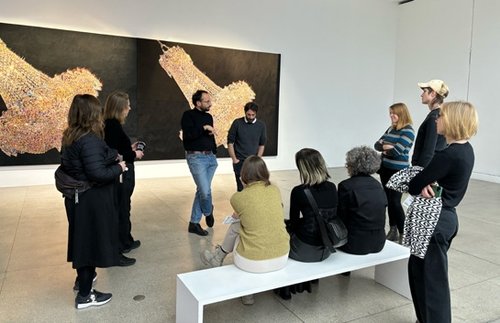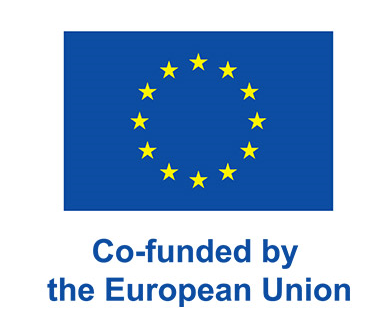Art Criticism Training Program – (In)Visible Traces. Artistic Memories of the Cold War

The Art Criticism Training Program, part of the Creative Europe project In(Visible) Traces: Artistic Memories of the Cold War, was a two-day intensive workshop held on November 11–12, 2024, at DAS WEISSE HAUS in Vienna. Designed to equip five emerging art critics, curators, and cultural professionals with the tools to critically engage with Cold War-era cultural heritage, the program brought participants together to explore the intersection of art, memory, and politics while deepening their understanding of the cultural legacies of the Cold War. Selected through an open call, participants were guided by experienced art critics Kate Sutton and Kathrin Heinrich.
The training combined theoretical discussions, practical writing exercises, and site visits. Participants explored Cold War-related landmarks in Vienna, including the Red Army Soldier monument at Schwarzenbergplatz, and attended the Forms of the Shadow exhibition at Secession. A guest presentation by artist, researcher, and curator Ekaterina Shapiro-Obermair provided additional insights. Shapiro-Obermair introduced her book Performing History: Public Commemoration of World War II in the Context of the Russo-Ukrainian War and shared her video work, encouraging participants to reflect on how artistic interventions can challenge historical narratives.
The program adopted a multifaceted approach, integrating historical context, critical theory, and practical writing techniques. Before the workshop, participants submitted draft texts of up to 1,000 words, allowing mentors to provide preliminary feedback and ensuring that discussions were focused and tailored. The structured progression of the training began with conceptual discussions and culminated in applied critical writing.
The first day provided a comprehensive overview of Austria’s historical framework, exploring themes of neutrality, occupation, and the cultural influence of Cold War politics. These discussions formed a foundation for analyzing Cold War artistic production beyond ideological divisions. Participants then engaged with Shapiro-Obermair’s artistic and curatorial practices, reflecting on her work in relation to the workshop's themes. Later that day, participants presented their draft texts for group discussion and mentor feedback, fostering critical dialogue and refining their writing for publication.
The second day focused on the craft of art criticism and ethical considerations in writing. Morning lectures by the program mentors offered insights into contemporary art criticism and its evolving landscape. Kate Sutton’s presentation, Amateur Hour: The Deskilling of Art Criticism, explored shifting attitudes toward expertise in art writing and the changing role of critics in the cultural sphere. This was followed by Kathrin Heinrich’s session, Ethics and Economy of Art Writing, which addressed challenges such as conflicts of interest, journalistic integrity, and the precarious nature of contemporary art writing.
In the afternoon, participants refined their texts during hands-on writing and editing sessions, emphasizing the importance of strengthening arguments, improving clarity, and effectively structuring critical essays. Site visits to the Red Army Soldier monument at Schwarzenbergplatz and the Forms of the Shadow exhibition served as case studies, deepening participants’ understanding of how historical narratives are constructed, interpreted, and challenged through artistic representation.
The program concluded with reflections on the texts and discussions of insights gained during the workshop. By the end of the two-day training, participants had sharpened their critical writing skills, broadened their perspectives on the role of art criticism in shaping historical and cultural discourse, and expanded their professional networks. This program offered an invaluable platform for participants to engage with the legacies of the Cold War through art and writing, fostering a deeper appreciation of how history and memory can be reexamined through contemporary cultural practices.
_________
This training was co-funded by the European Union. The views expressed are those of the authors and participants and do not necessarily reflect the official position of the European Union or the European Education and Culture Executive Agency (EACEA). Neither the European Union nor EACEA can be held responsible for any content presented.




